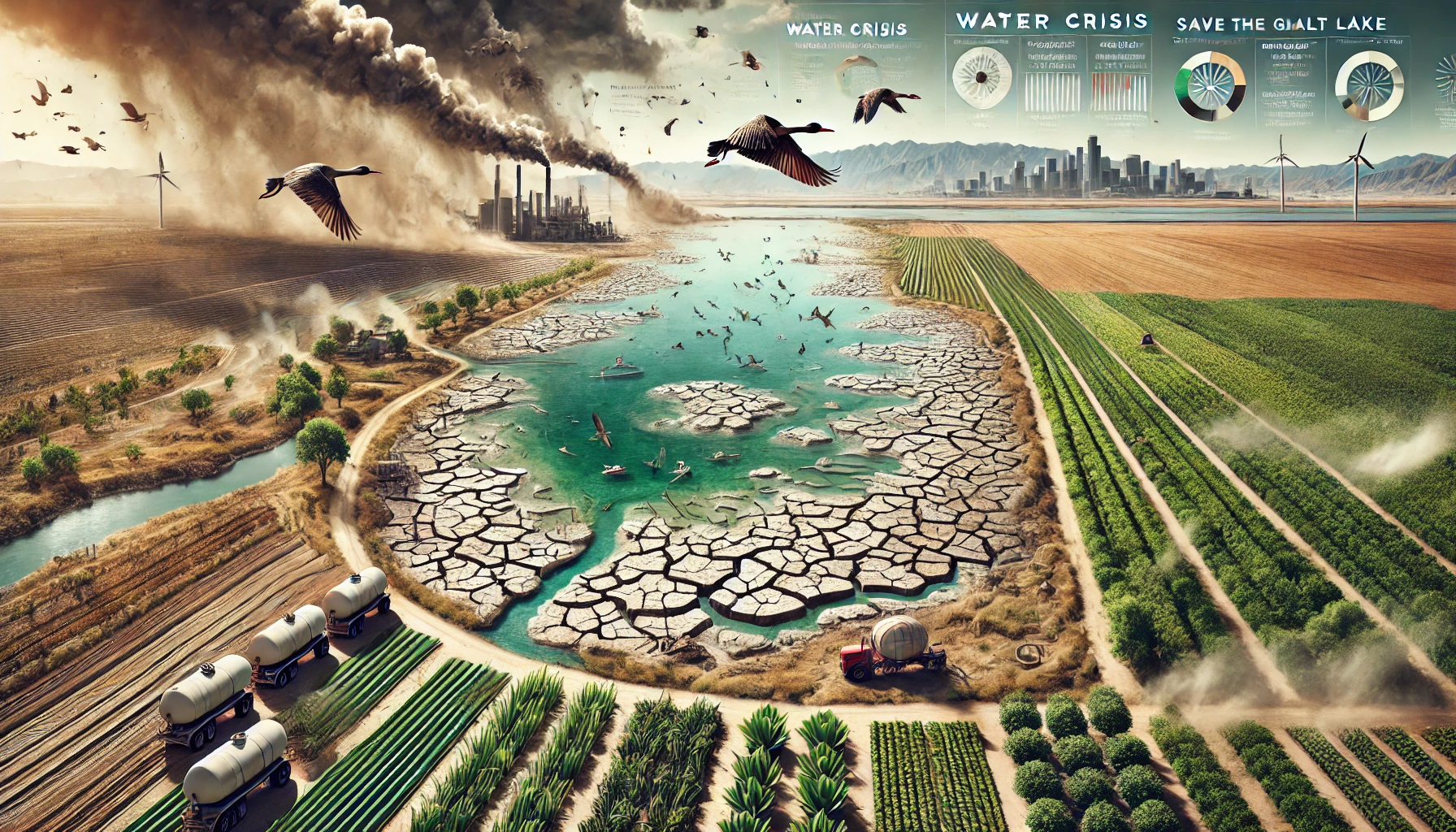The Great Salt Lake is shrinking rapidly due to agricultural water diversion, with 80% used for alfalfa and hay irrigation. This threatens biodiversity, human health, and the economy, prompting researchers to call for a 35% reduction in water consumption, farmer compensation, and conservation measures to secure the lake’s future.
Located in northern Utah, the Great Salt Lake is the biggest saltwater lake in the Americas and the eighth-largest terminal lake globally. It plays a major role in shaping the region’s weather, notably by producing lake-effect snow.
Key Issue: The Great Salt Lake has lost over 15 billion cubic yards of water in the past 30 years, shrinking at a rate of 4 inches annually, primarily due to agricultural water diversions.
Major Findings:
- Water Usage: 62% of river water flowing into the lake is diverted for human activities, with 75% used for agriculture, mainly for alfalfa and hay crops (80% of agricultural water).
- Deficit Trends: The lake’s water budget has faced long-term deficits due to overuse, climate change, and drought.
Reference: SciTech Daily

